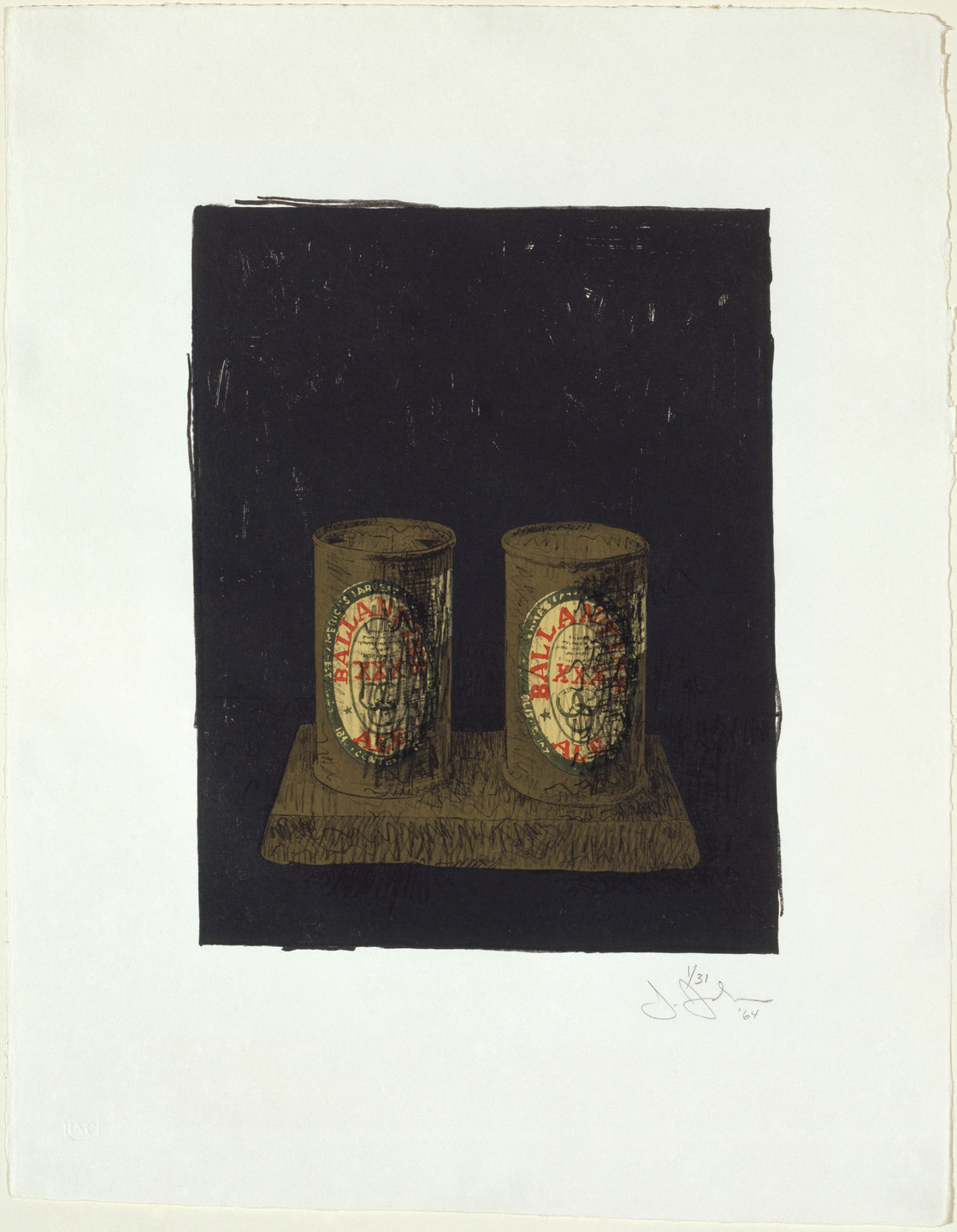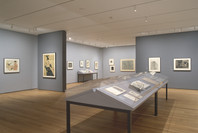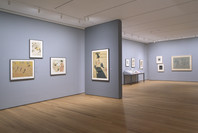Printmaking has provided a rich source for Jasper Johns's art since 1960, when he was first invited to work at Universal Limited Art Editions (ULAE) by the now-renowned publisher Tatyana Grosman. The required stones, plates, and screens, as well as the proofing process itself, have served to facilitate his use and reuse of imagery in new contexts. Such alterations and metamorphosis have allowed Johns to continually forge new meanings for his evolving artistic vocabulary, not only in printmaking but also in painting and drawing, mediums that, for him, are all deeply intertwined.
Johns is of the generation that led to a renaissance of printmaking in America, and he has worked at several printshops that were established in this period. Having created some four hundred printed works in the course of his career, in addition to countless working proofs and evolving states, he carefully organizes this body of work in a personal archive that documents his creative process. The technique of lithography is primary for him, but he has also worked extensively in etching and other intaglio processes. In addition, sustained periods of screenprint and monotype activity have led to substantial achievements. Currently, he has his own press, making printmaking easier and more convenient.
From early images like Target and Ale Cans, to enigmatic abstractions and collagelike figurative compositions, Johns has forged an individualized style that is difficult to categorize among the movements of contemporary art. His early placement in a transitional period between Abstract Expressionism and Pop art lost significance as his work unfolded. Yet an underlying emotional and intellectual resonance has remained constant throughout. His probing imagery invites introspection in almost poetic terms of reference, suggestion, and allegory. A confounding complexity keeps it elusive yet also serves to make it a telling reflection of modern experience.
Publication excerpt from Deborah Wye, Artists and Prints: Masterworks from The Museum of Modern Art, New York: The Museum of Modern Art, 2004, p. 156.
At first glance, Ale Cans appears to be a representation of immediately recognizable mundane objects portrayed in a realistic manner. A second look, however, reveals small details that challenge this initial assumption. The pair of cans, placed frontally with exacting care, sits on a base that seems to float in the surrounding black void. Black scribbled lines, some extending into the empty margin around the composition and others creating shadows on the cans and base, affirm the artist's touch. And while the cans have a three-dimensional presence, the black background is clearly flat. These conflicting sensations create an unsettling tension between reality and illusion.
For this print, Johns used as his subject his own 1960 sculpture Painted Bronze, his first work showing two Ballantine Ale cans. Since the publication of this print, the artist has periodically reinterpreted these cans in various mediums, while subjecting the image to continuing metamorphosis. The transformation of everyday "found" objects into fine art was first introduced by the Dada and Surrealist artists early in the twentieth century. Here Johns has taken this transformation one step further, manipulating the object until it becomes something other than what it is.
Publication excerpt from The Museum of Modern Art, MoMA Highlights, New York: The Museum of Modern Art, revised 2004, originally published 1999, p. 252.


